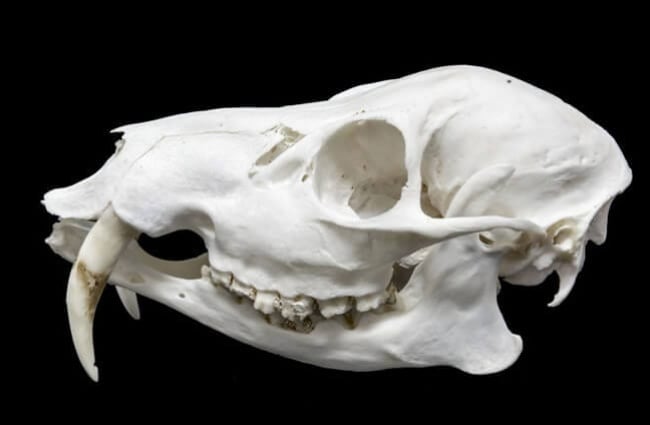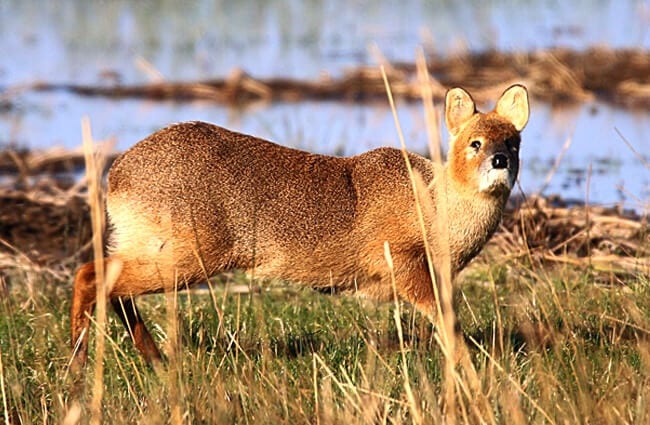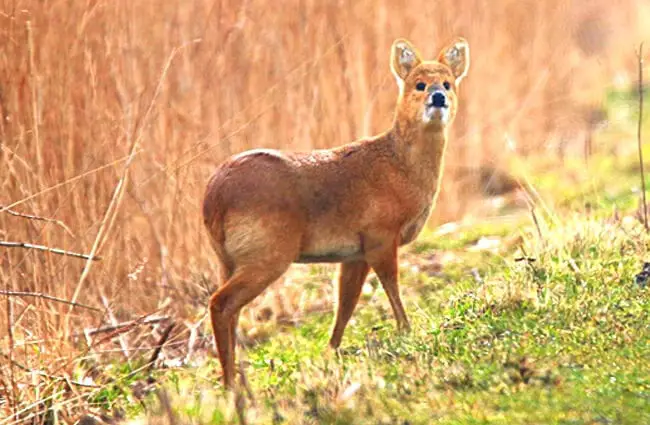A Deep Dive into the World of Water Deer
The Water Deer, a truly unique cervid, occupies a fascinating niche in the animal kingdom. Often overlooked, this small deer possesses an unusual combination of characteristics that set it apart from its more familiar relatives. This article will explore the Water Deer’s biology, behavior, habitat, and its place in the ecosystem, offering insight for researchers, animal enthusiasts, and anyone curious about this captivating creature.

What is a Water Deer?
The Water Deer (Hydropotes inermis) is a small deer native to China and Korea. It is distinct because it lacks traditional antlers; instead, males possess elongated canine teeth that protrude from the upper jaw, resembling tusks. These “tusk antlers” are used for display and combat during the breeding season. This adaptation is rare among deer species and makes the Water Deer particularly intriguing to zoologists.
Habitat and Distribution
Water Deer prefer wetlands, marshy grasslands, and areas near rivers and lakes. They thrive in environments with abundant vegetation that provides forage and cover. Historically, they were found throughout much of eastern China and the Korean peninsula. Today, habitat loss and hunting have reduced their range, though they remain relatively common in some regions. The Korean Water Deer (Hydropotes inermis arunensis) is a subspecies that is primarily found on the Korean peninsula, often inhabiting rice paddies and agricultural landscapes.

Diet and Feeding Habits
Water Deer are herbivores, feeding mainly on grasses, sedges, and other aquatic vegetation. They are selective feeders, choosing nutrient-rich plants when available. They often graze in damp areas, using their specialized lips to gather vegetation efficiently. During winter, when fresh plants are scarce, they may browse on woody plants and bark. They are crepuscular feeders, meaning they are most active during dawn and dusk.
Behavior and Social Structure
Water Deer are generally solitary, except during the breeding season. Males establish territories and defend them from other males using their tusk antlers and vocalizations. They communicate through scent marking, vocal calls, and visual displays. Females maintain individual ranges and join males during the mating season. They are adept swimmers and will readily enter water to escape predators or reach feeding areas. Their quick, bounding gait allows them to move swiftly through dense vegetation.

Reproduction and Life Cycle
The breeding season typically occurs in the summer. Males compete for access to females, engaging in tusk-locking contests to establish dominance. Gestation lasts approximately 170-180 days, and females usually give birth to a single fawn in the spring. Fawns are precocial, standing and walking soon after birth. They remain with their mothers for several months, learning essential survival skills. Water Deer reach sexual maturity at about 1.5 to 2 years, and their average lifespan in the wild is 8 to 10 years.
Ecological Role and Interactions
Water Deer play an important role in their ecosystem. They serve as prey for predators such as wolves, foxes, and raptors. Their grazing influences vegetation patterns, and their presence contributes to biodiversity and health of wetland habitats. They may also interact with other herbivores, such as geese and ducks, competing for resources in shared grazing areas. Parasites and diseases, like those affecting other cervids, can influence population dynamics.

Water Deer and Humans
Historically, Water Deer were hunted for their meat and hides. Today, they are still hunted in some areas, but populations are declining due to habitat loss and poaching. They are occasionally kept in zoos and wildlife parks. In China, they are considered an indicator species for wetland health. Conservation efforts aim to protect remaining habitat and ensure long-term survival.
Encountering a Water Deer in the Wild
If you encounter a Water Deer while hiking or exploring, observe it from a distance. Avoid approaching or attempting to feed it. Allow the animal to move freely and maintain a safe distance. Report any sightings to local wildlife authorities. Disturbing wildlife can cause stress and disrupt natural behavior.
Caring for Water Deer in Captivity
Water Deer in captivity require spacious enclosures with access to both land and water. Provide a varied diet of grasses, hay, and supplemental feed. Ensure enclosures are secure to prevent escapes. Regular veterinary care is essential to monitor health and prevent disease. Enrichment activities, such as providing browse and opportunities for social interaction, enhance well-being. Avoid overcrowding and keep the environment clean and hygienic.

Evolutionary History
Water Deer represent an ancient lineage of deer. Fossil evidence indicates that their ancestors lived in Asia millions of years ago. Their unique dentition and lack of traditional antlers are thought to be adaptations to wetland environments. They are considered a living fossil, offering valuable insights into deer evolution. Genetic studies continue to unravel their evolutionary relationships and track population history.
Interesting Facts About Water Deer
- Water Deer can run up to 40 km/h (about 25 mph).
- Their “tusks” are elongated canine teeth that grow continuously throughout life.
- They are excellent swimmers and can remain submerged for several minutes.
- Water Deer are crepuscular, active during dawn and dusk.
- They communicate through scent marking, vocalizations, and visual displays.


Conclusion
The Water Deer is a remarkable animal, possessing a unique combination of adaptations and a captivating evolutionary history. This often-overlooked species plays a vital role in its ecosystem and deserves attention and conservation efforts. By learning more about this fascinating creature, we can help ensure its survival for generations to come.

![Red Angus Closeup of a beautiful Red Angus cowPhoto by: U.S. Department of Agriculture [pubic domain]https://creativecommons.org/licenses/by/2.0/](https://animals.net/wp-content/uploads/2020/03/Red-Angus-4-238x178.jpg)




![Red Angus Closeup of a beautiful Red Angus cowPhoto by: U.S. Department of Agriculture [pubic domain]https://creativecommons.org/licenses/by/2.0/](https://animals.net/wp-content/uploads/2020/03/Red-Angus-4-100x75.jpg)

